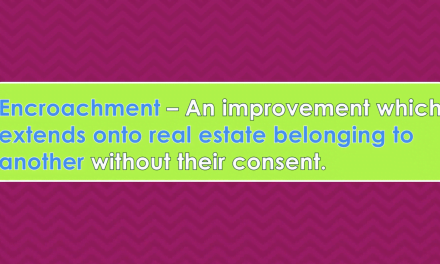Why this matters: A landlord or property manager uses a Commercial Lease Agreement to lease commercial property to a tenant, and tailors the lease agreement to the specifics of the tenancy by choosing one of six variations to use.
Commercial lease agreements
A lease agreement is a contract entered into by a landlord and tenant. Its provisions set out the tenant and landlord responsibilities, namely, the payment of money obligations and the maintenance of the real estate.
The lease agreement also acts as a grant, conveying a possessory interest in real estate, called a leasehold estate, or simply referred to as a lease. [Calif. Civil Code §761(3)]
The landlord on entering into a lease agreement and delivering possession of the leased property to the tenant, conveys to the tenant the exclusive right to occupy a parcel of real estate, or space within a parcel, for a fixed period of time.
The tenant’s right to occupancy of the real estate for the term of the lease is conditioned on the tenant’s performance of their obligations under two categories of provisions in the lease agreement:
- one calls for the payment of rent and operating expenses incurred in the use of the property; and
- the other calls for maintenance of the property by either the tenant or the landlord.
During the term of the lease, the landlord as the fee owner holds a reversionary interest in the leased parcel or space. On expiration of the term of the lease, the right of possession to the real estate reverts to the landlord.
Once the landlord and tenant have entered into a lease agreement and the tenant takes occupancy, the right of possession of the leased real estate is controlled by landlord/tenant law, not contract law.
In contrast, lease agreement provisions for payment of money and maintenance — rent, operating expenses and maintenance which evidence the debt the tenant agreed to pay — are controlled by contract law, not landlord/tenant law.
The landlord may prematurely recover occupancy of the real estate when the tenant fails to perform a critical contractual provision in the lease agreement, like not paying delinquent rent. On the tenant’s breach, the landlord may cross over and declare a forfeiture of the tenant’s leasehold interest and right of possession in the property. Thus, you observe the nexus between landlord/tenant and contract laws.
In contrast, a forfeiture of the right of possession, the leasehold interest conveyed by the lease agreement, does not cancel the underlying lease agreement, the contract. The lease agreement requiring the tenant to pay rent and other amounts for the duration of the term of the lease remains intact and enforceable.
However, the tenant’s obligation to pay as agreed in the lease agreement is avoided by a cancellation of the lease agreement prior to expiration of the term of the lease. For example, a landlord’s conduct due to their misunderstanding of the forfeiture provision in a notice to quit on a tenant’s breach may bring about a surrender of the lease. Thus, the lease agreement itself is cancelled, and with that the provisions to pay rent. [Desert Plaza Partnership v. Waddell (1986) 180 CA3d 805]
Related article:
The lease agreement forms
An agreement conveying possession to real estate for a term of occupancy exceeding one year needs written evidence before it’s enforceable, a statute of frauds requirement. [CC §1624(a)(3)]
Provisions in a lease agreement are separated into three categories of landlord and tenant activities:
- conveyance of the leasehold interest;
- money obligations of the tenant and other property operating expenses, debts called rent; and
- responsibility of the tenant and the landlord for care and maintenance of the property. [See RPI Form 552]
Commercial lease agreements exist in many variations. The landlord and tenant choose one based on:
- whether the property is for single or multi-tenant use;
- the type of tenancy; and
- who is responsible for maintenance.
Realty Publications, Inc. (RPI) publishes and maintains gross and net lease agreements tailored to common variations in commercial rental and lease agreements, including:
- Single Tenant Gross Lease [See RPI Form 552];
- Multi-Tenant Gross Lease [See RPI Form 552-1];
- Single Tenant Net Lease [See RPI Form 552-2];
- Multi-Tenant Net Lease [See RPI Form 552-3];
- Percentage Lease [See RPI Form 552-4]; and
- Month-to-Month Tenancy. [See RPI Form 552-5]
A landlord and tenant may further customize and modify their lease agreements with different addenda, such as:
- Maintenance Modification Addendum [See RPI Form 552-6];
- Alienation Addendum [See RPI Form 552-7]; and
- Subordination Addendum. [See RPI Form 552-8]
To be enforceable, a lease agreement:
- identifies the location of the leased premises with reasonable certainty;
- sets forth the term of the tenancy conveyed; and
- states the rental amount and other sums due, and the time, place and manner of payment. [Levin Saroff (1921) 54 CA 285]
Related article:
Form-of-the-Week: The Right of First Refusal to Buy — Form 579
The contents of a lease agreement
A commercial lease agreement form has five main sections:
- identification of the participants and the premises, conveyance of the leasehold, and its term;
- rent provisions for the rent and other amounts of money owed by the tenant, and terms for payment of the amounts;
- use-maintenance provisions allocating between the landlord and the tenant the responsibilities for care and maintenance responsibilities of the leased property;
- miscellaneous provisions for circumstances unique to the transaction; and
- the signature of the participants.
Related article:
Form-of-the-Week: Buyer and Tenant Representation Agreements — Forms 103.1, 103.2, 105.1 and 105.2
Analyzing a commercial lease agreement
A leasing agent, tenant or landlord uses the Commercial Lease Agreement — Gross — Single Tenant published by RPI when the entire space in a commercial property is leased by one tenant for a fixed term. The agreement grants the tenancy and sets the terms for rent, imposes payment of utilities and janitorial expenses on the tenant with the landlord responsible for maintenance and carrying costs of the property. [See RPI Form 552]
The Commercial Lease Agreement — Gross — Single Tenant contains:
- Facts: The landlord’s and tenant’s names, a description of the leased premises, the security deposit and first month’s rent amount and a checklist of addenda. [See RPI Form 552 §1]
- Term of lease: The commencement and expiration date of the lease term, and conditions of the occupancy conveyed. [See RPI Form 552 §2]
- Possession: The date possession is delivered to the tenant and conditions related to possession. [See RPI Form 552 §3]
- Rent: The schedule for payment of rent, the date rent begins to accrue, and the amount of rent as either a fixed rent amount, a graduated rent amount or a Consumer Price Index (CPI) adjusted amount, and how rent is paid, who it is paid to, the recipient’s address, credit card and bank account info, and when rent is delinquent and the late fee chargeable. [See RPI Form 552 §4]
- Operating expenses: Utility, service charges and property taxes the tenant and landlord are separately responsible for, and energy consumption reports. [See RPI Form 552 §5]
- Repair and maintenance: The condition of the premises on transfer of possession, the fixtures the tenant maintains and the structure and common area components the landlord maintains. [See RPI Form 552 §6]
- Use of the premises: The tenant’s intended use of the premises, uses not allowed by the tenant on the premises, and whether an inspection by a Certified Access Specialist (CASp) has occurred. [See RPI Form 552 §7]
- Appurtenances: The tenant’s right to ingress and egress and use of the entire property. [See RPI Form 552 §8]
- Assignment, subletting and encumbrance: Whether and on what conditions the tenant may assign the lease or sublet any part of the premises, or further encumber the leasehold. [See RPI Form 552 §9]
- Signs and advertising: Tenant signage needs landlord consent, and whether the landlord provides a directory and sign on tenant’s suite paid by the tenant. [See RPI Form 552 §10]
- Tenant improvements/alterations: Landlord authorization required for tenant improvements. [See RPI Form 552 §11]
- Right to enter: Landlord access on 24 hours’ notice. [See RPI Form 552 §12]
- Liability insurance: Tenant to obtain commercial general liability and plate glass insurance coverage, and waiver of subrogation rights. [See RPI Form 552 §13]
- Fire insurance: Tenant to obtain fire insurance policy for tenant’s personal property and tenant improvements. [See RPI Form 552 §14]
- Hold harmless: Tenant holds landlord harmless for claims due to the tenant, employees or patrons. [See RPI Form 552 §15]
- Destruction: On total or partial destruction of the premises, tenant to repair when caused by the tenant or covered by the tenant’s insurance, and landlord to repair when not covered by the tenant’s insurance and covered by the landlord’s insurance, and no termination of lease agreement on destruction with exceptions. [See RPI Form 552 §16]
- Subordination: Tenant to subordinate their leasehold estate to new financing with specified parameters not likely to jeopardize tenant’s leasehold. [See RPI Form 552 §17]
- Tenant estoppel certificates: Tenant to execute a Tenant Estoppel Certificate verifying the terms of the lease agreement. [See RPI Form 552 §18]
- Eminent domain: On condemnation for public use, the condemning agency limits tenant’s recovery for other than a leasehold interest. [See RPI Form 552 §19]
- Waiver: A waiver of a breach does not constitute a waiver of another breach, and landlord’s acceptance of rent does not waive landlord’s right to enforce a breach. [See RPI Form 552 §20]
- Default remedies: On a tenant breach, landlord may collect future rent after a forfeiture of possession. [See RPI Form 552 §21]
- Tenant broker fees: The landlord to pay tenant broker fees per an addendum. [See RPI Form 552-9; See RPI Form 552 §22]
- Miscellaneous: Attached addenda; tenant’s receipt of the Agency Law Disclosure; the lease agreement is the entire agreement binding on all heirs, assigns and successors; enforced by California law; an attorney fees provision; whether performance of the lease agreement is secured by a trust deed or assured by a Guarantee Agreement; and whether the property is located in a special flood hazard area or an area of potential flooding. [See RPI Form 552 §23]
- Blank: A blank space for writing additional provisions. [See RPI Form 552 §24]
- Signatures: The landlord, landlord’s broker, tenant and tenant’s broker sign and date the agreement.
Related article:















